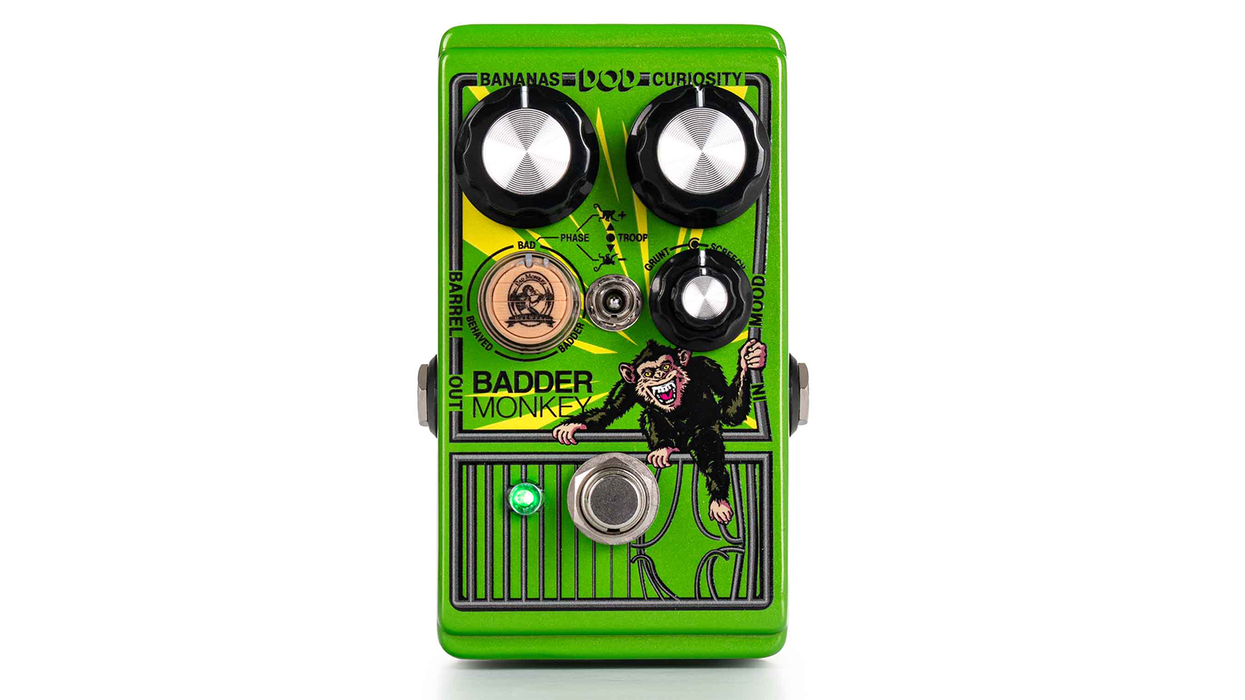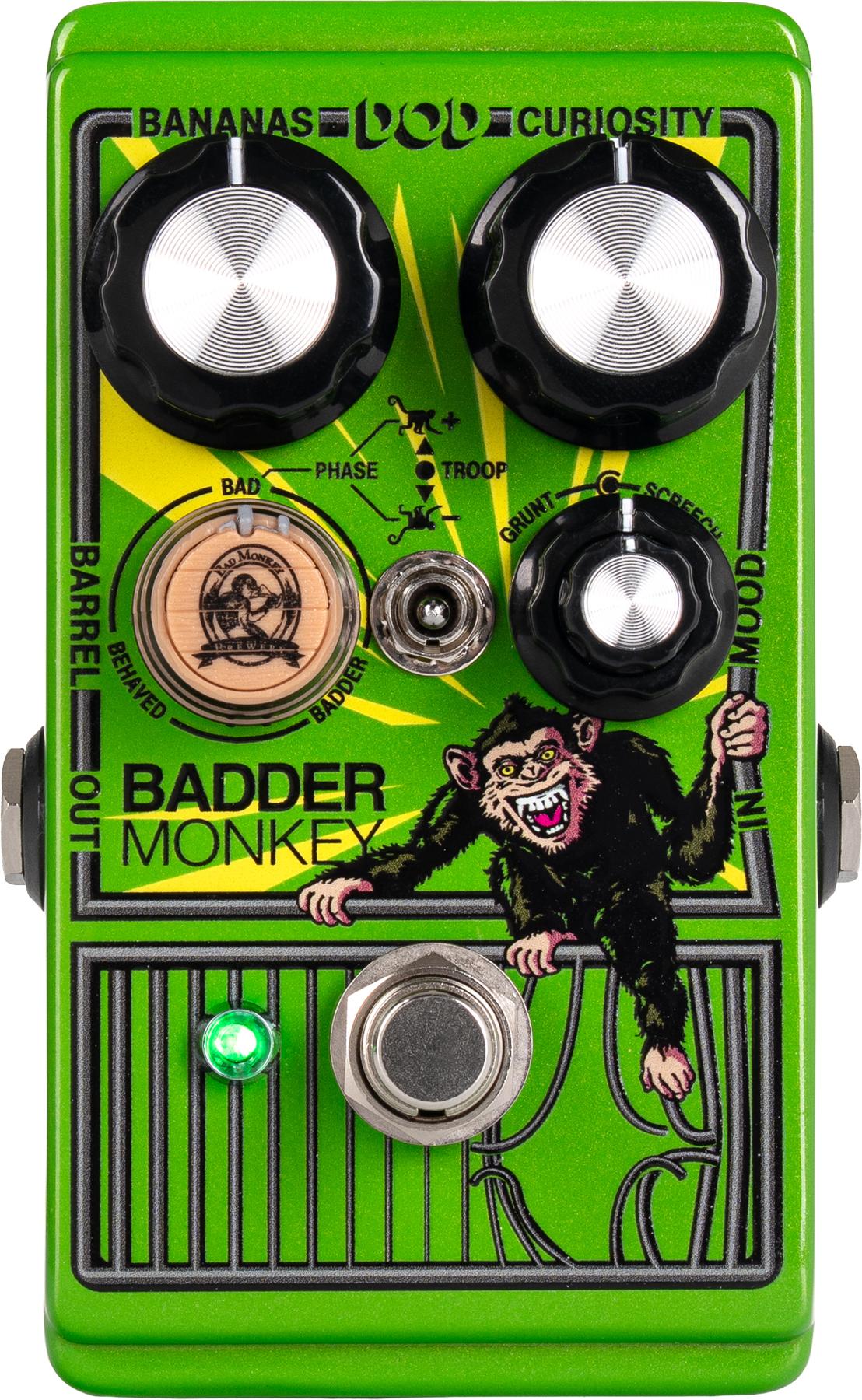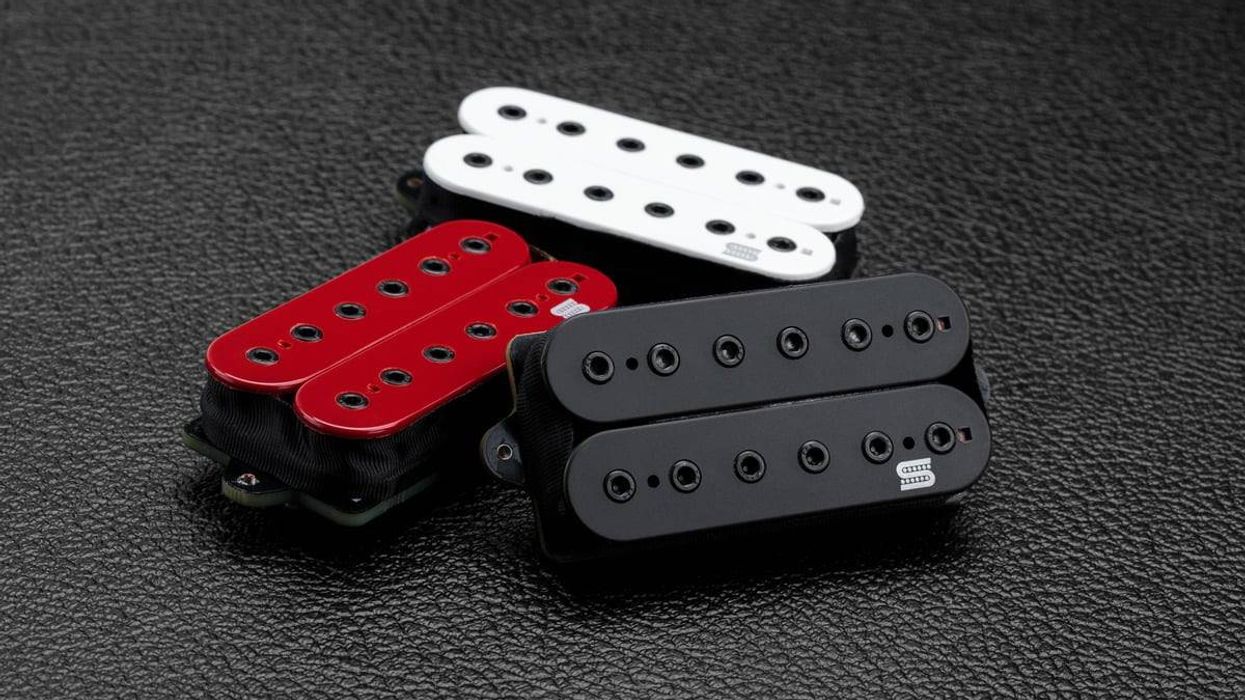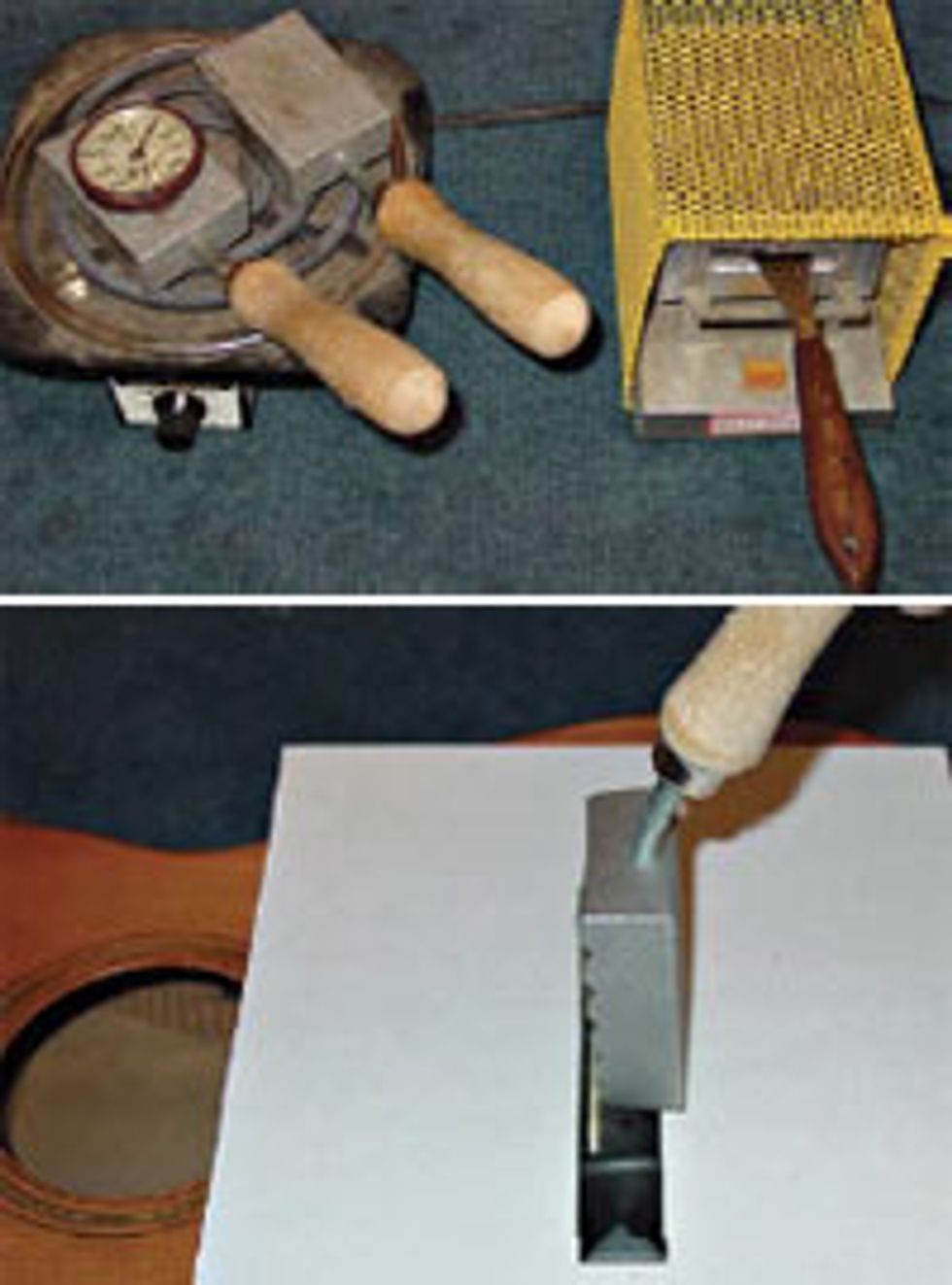
I am excited to get started and share the restoration of this wonderful, early Martin. In last month’s column, we assessed the damage and made a list of concerns and repairs that would be needed. The first repair that we’ll begin is the removal and resetting of the warped ebony bridge.
We will need the following tools and supplies for the procedure:
- Bridge/Fingerboard Iron #4607
- Surface Thermometer #4603
- Spatula Bridge Removal Knife #4464
- Sloane Bridge Clamp #0682
- Hot Plate
- Aluminum Block
- Protective 8 1/2” x 11” Cardstock Paper
As I inspected the guitar, I couldn’t help but notice the exquisite ebony bridge. It was finely crafted from a naturally rich, black, tight-grained bridge blank. It looked very unusual compared to what I normally see in flattop bridge woods.
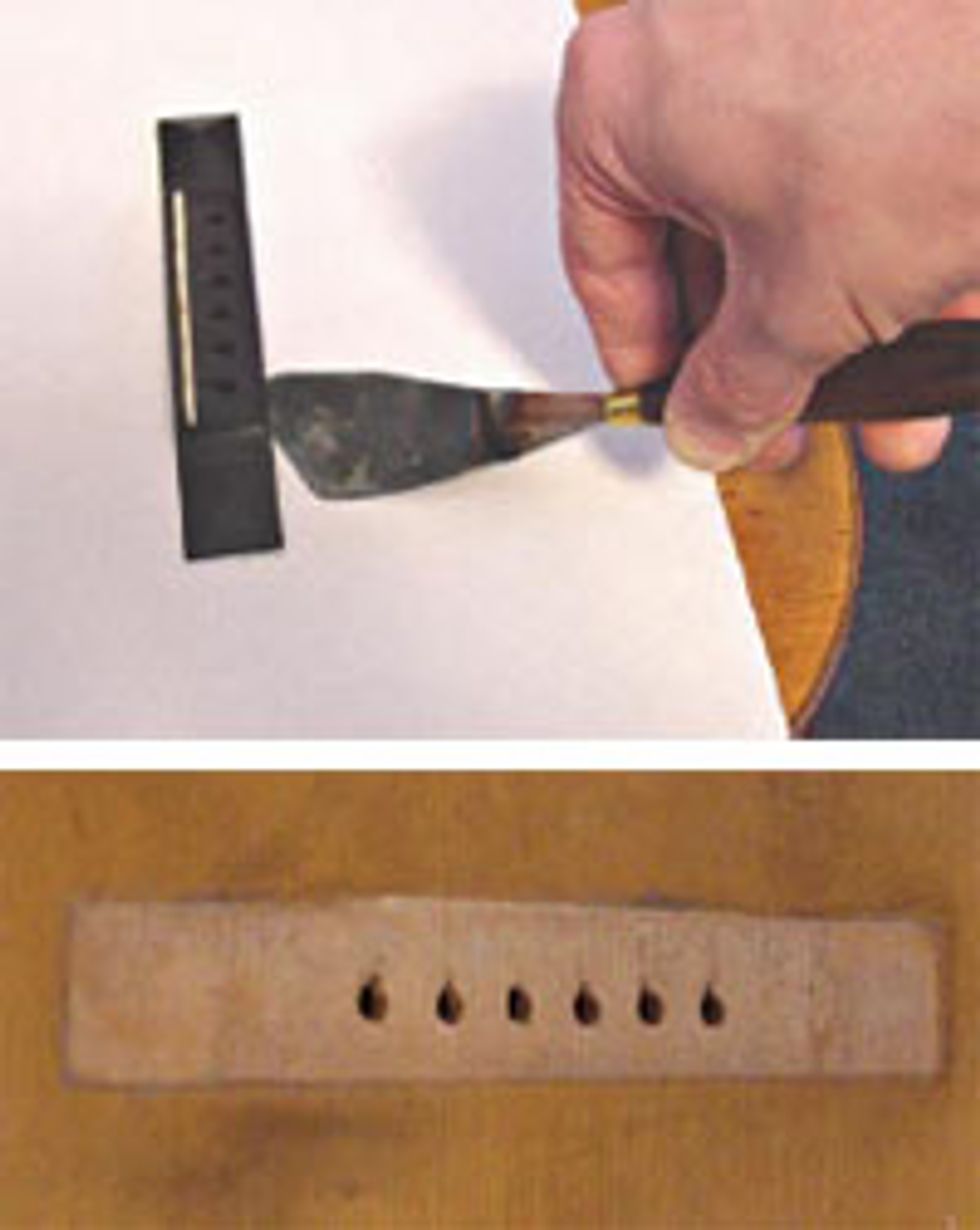 I heated up my bridge/fingerboard iron on a basic hot plate, purchased from a local department store. The temperature was monitored with a surface thermometer from Stew-Mac. 250 degrees is a safe starting temperature, although I’ve found that larger bridges with more mass or different adhesives need an increased temperature – usually 350 degrees. I use two bridge/fingerboard irons, alternating them for really tough, epoxied bridges to apply a consistent temperature. Always remember to monitor your work and be careful.
I heated up my bridge/fingerboard iron on a basic hot plate, purchased from a local department store. The temperature was monitored with a surface thermometer from Stew-Mac. 250 degrees is a safe starting temperature, although I’ve found that larger bridges with more mass or different adhesives need an increased temperature – usually 350 degrees. I use two bridge/fingerboard irons, alternating them for really tough, epoxied bridges to apply a consistent temperature. Always remember to monitor your work and be careful. To protect the top of the guitar before applying any heat to the bridge. Take a sheet of 8 1/2” x 11” cardstock, cut out around the bridge, and lay it over the guitar’s top. It is quick and easy to cut and will protect the guitar if you have a slip of the hand.
The bridge on this 0-18 came off in about 10-15 minutes as I was checking the warmed glue joint with my flexible spatula bridge removal knife. This knife is something that Don MacRostie at Stew-Mac hipped me to years back. The 3 7/8” blade tapers from handle to tip, so you can keep the blade down while holding the handle safely off the guitar top – thanks Don! As you can see in the next picture, there was minimal tear out after the bridge was removed.
Re-warping the Bridge
Now that the bridge is removed, it’s time to clean and inspect the underside of the bridge. I use a razorblade to lightly remove unwanted grime. Then with a thin amount of warm water applied over the ebony glue surface, I lightly burnish the area with a spatula to remove the leftover hide glue.
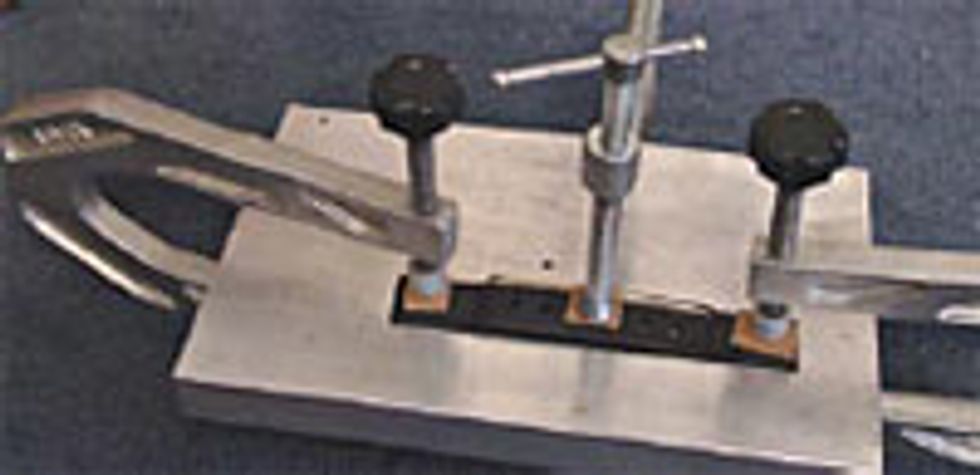 Now that the gluing surface of the bridge is prepped and clean, I am ready to begin the re-warping process. I’m using a scrap of aluminum for my bridge leveling table and Sloane bridge clamps to secure the bridge to the flat surface. A microwave comes in handy to quickly boil a cup of water. Once the water is boiling, I use a Q-tip to apply the water to the gluing surface. After applying four coats of boiling water, the bridge was quickly clamped down with Sloane bridge clamps to the bridge leveling table. The bridge remains clamped for 24 hours and often this process will need to be done more than once to achieve the desired effect. Note: Squared pieces of cork were used between the clamping palm and bridge for extra protection while clamping. This process worked well for removing and rewarping the pyramid bridge on this guitar and for the most part, is similar to most bridge removals that we do in the shop on flattops.
Now that the gluing surface of the bridge is prepped and clean, I am ready to begin the re-warping process. I’m using a scrap of aluminum for my bridge leveling table and Sloane bridge clamps to secure the bridge to the flat surface. A microwave comes in handy to quickly boil a cup of water. Once the water is boiling, I use a Q-tip to apply the water to the gluing surface. After applying four coats of boiling water, the bridge was quickly clamped down with Sloane bridge clamps to the bridge leveling table. The bridge remains clamped for 24 hours and often this process will need to be done more than once to achieve the desired effect. Note: Squared pieces of cork were used between the clamping palm and bridge for extra protection while clamping. This process worked well for removing and rewarping the pyramid bridge on this guitar and for the most part, is similar to most bridge removals that we do in the shop on flattops. Next month, we’ll continue on with the restoration of this classic Martin acoustic. I’m looking forward to sharing our next steps in “Restoring an Original.” - John
John Brown
John Brown, of Brown''s Guitar Factory, is the inventor of the Fretted/Less bass. He owns and operates a full guitar manufacturing and repair/restoration facility, which is staffed by a team of talented luthiers. He is also the designer of guitar making/repair tools and accessories that are used today by instrument builders throughout the world.
www.brownsguitarfactory.com
info@brownsguitarfactory.com






![Rig Rundown: Russian Circles’ Mike Sullivan [2025]](https://www.premierguitar.com/media-library/youtube.jpg?id=62303631&width=1245&height=700&quality=70&coordinates=0%2C0%2C0%2C0)













